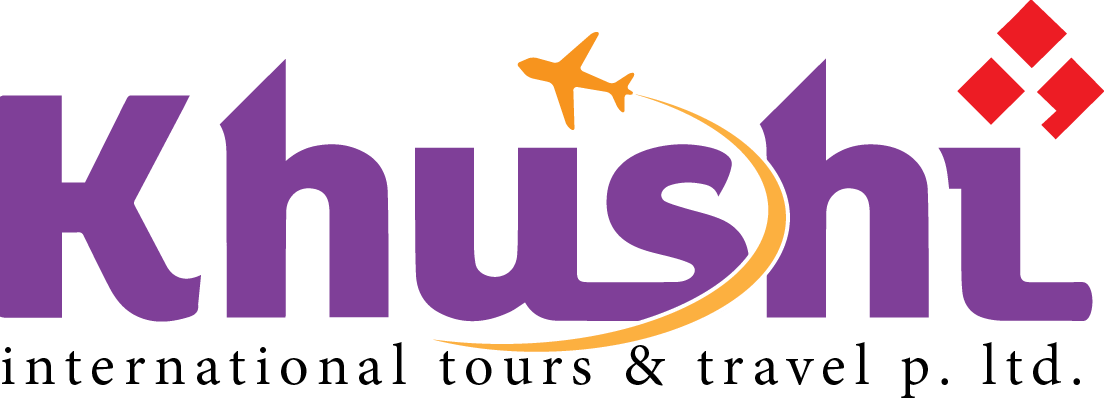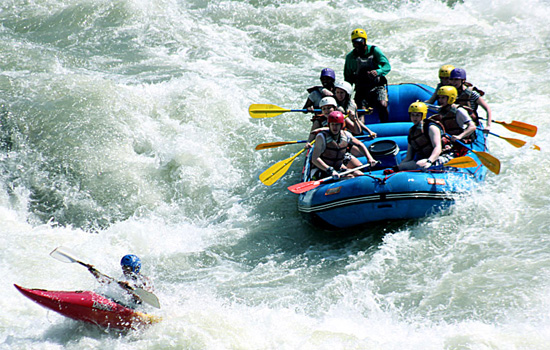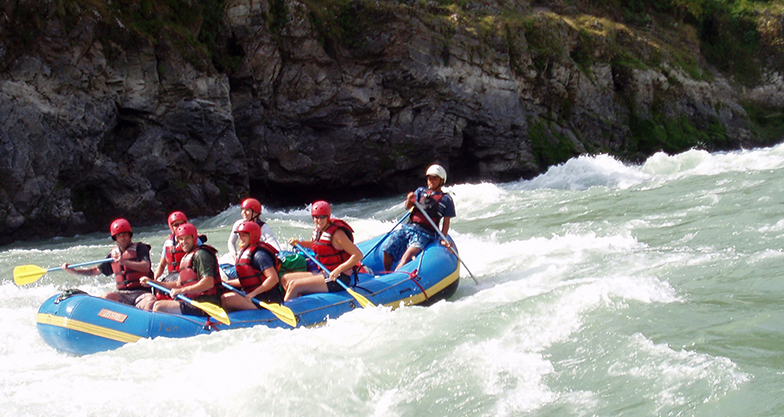Rafting
Rafting In Nepal
A sequence of worlds the typical outstanding white water rafting in Nepal and kayaking is started early eighties.
White water bubbled rafting means trip down the chatty water of River in hot-air balloon rubber rating or kayaking larger than loud force and revolving fast moving with Nepal river water for the keenness of the life time. Rafting in Nepal is challenging risk that forces your adrenaline precise to the hilt.
Adventure Discovery treks Nepal offers beyond evaluate Nepal rafting adventure that suits for any rank of practice. Our rafting trip is planed properly for first time rafters to thrill seekers.
If the endeavor strength, flexibility, survival and bravery are well-established on you then Nepal river rafting trip are fairly protected for you. Our river rafting guides are particular skilled in crisis wilderness first aid and swift water liberate.
On the rafting trip keeping your safety is our main aim. We use best rafts, flotation strategy, helmets and paddles.
Please have look our web site for detailed information on Nepal rafting trip scored according to the difficulty of their run, Rafting trip in Nepal can be join with treks are completely unavoidable adventure project when you traveling in Nepal.
Nepal River Grades are International river classification of difficulty.
| Name of River | Duration | River Grade | Starting Point | Ending point |
| Trisuli | 2 Days | 3+ | Baireni | Simaltar |
| Bhote Kosi | 2 Days | 5+ | Baseri | Dam |
| Kaligandaki | 3 Days | 4+ | Beni | Mirmi |
| Seti | 2 Days | 3+ | Damauli | Gaighat |
| Sunkoshi | 10 Days | 5 | Dolalghat | Chataira |
| Karnali | 10 Days | 5 | Sauli | Bhen Bridge |
| Marshyangdi | 6 Days | 5+ | Ngadi | Bimal Nagar |
Grade 1
Easy: Moving water with occasional small rapids. Few or no obstacles.
Grade 2
Moderate: Small rapids with regular waves. Some maneuvering required but easy to navigate.
Grade 3
Difficult: Rapids with irregular waves and hazards that need avoiding. More difficult manicuring required but routes are normally obvious. Scouting from the shore is occasionally necessary.
Grade 4
Very difficult: Large rapids that require careful manicuring. Dangerous hazard. Scouting from the shore is often necessary and rescue is usually difficult. Kayakers should be able to roll. Turbulent water and large irregular waves may flip rafts. In the event of a mishap there is significant risk of loss, damage and/ or injury.
Grade 5
Extremely difficult: Long and very violent rapids with several hazards. Continuous, powerful, confused water makes route finding difficult and caution from the shore is essential. Rescue is very difficult or impossible and in the event of a mishap there is a significant hazard to life.
Seasons
Winter – early December to mid- March
The Nepal whitewater experience is still a warmer and sunnier one than in many parts of the world but there are longer shadows in the deep river valleys and a warmer sleeping bag is advised. Wetsuits may be needed.
Spring/Summer – late March to early June
The clear, still powerful rivers driven by spring snow melt are, on average, reduced by one grade less than their high-water maximum. The Karnali and Kali Gandaki, perfectly suited to this season, are great ‘all comers’ rivers.
Monsoon – mid-June to early September
The Rivers are full and the few raft trips that are operated are limited to overnight programs on the Trishuli and Seti.




